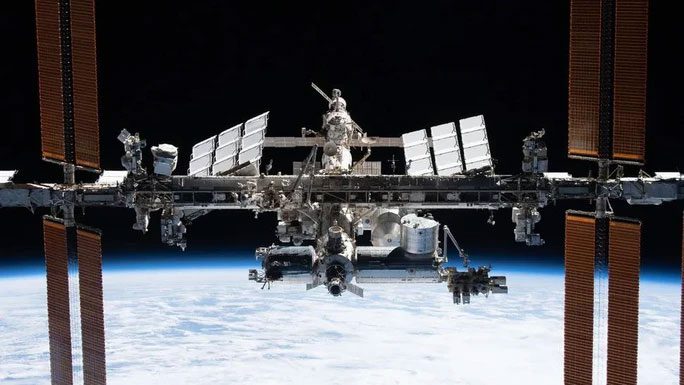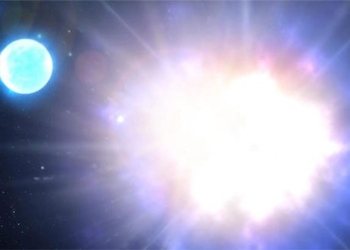The International Space Station (ISS) recently underwent a significant orbital change after the Russian spacecraft Progress MS-24 propelled it twice on November 10-11—first as a “drill” and the second time to avoid a real collision.
In the initial announcement reported by TASS in the early hours of November 10-11, the Russian spacecraft Progress MS-24, which was docked with the ISS, fired its engines for about 15 minutes to raise the station’s orbit by 2.5 kilometers, reaching an altitude of 417.98 kilometers above the Earth’s surface.
This was merely a “drill” to avoid threats from space debris.

The International Space Station ISS is currently in a minimum orbit of 419.1 km after being pushed twice by the Russian spacecraft on November 10-11 – (Photo: NASA/ESA)
However, another announcement appeared on Roscosmos’ Telegram channel late on November 10, stating that another engine firing of Progress MS-24 occurred at 22:07 (Vietnam time), raising the ISS by approximately 900 meters to “avoid a collision with space debris.”
The second announcement indicated that the ISS’s orbit has now reached a minimum altitude of 419.1 km and a maximum of 436.1 km, according to preliminary data.
The International Space Station currently hosts seven astronauts, including three from Russia, two from the United States, one from Denmark, and one from Japan.
Meanwhile, the Russian Progress MS-24 is a cargo spacecraft tasked with resupplying the station.
According to Space.com, the ISS has been “running away” from debris more frequently than ever. Data from NASA shows that from 1999 to December 2022, the ISS had to reposition itself 32 times.
However, from December 2022 to now, the station has had to move an additional five times, with two of those occurrences happening in August 2023 alone.
Space debris has also caused significant damage to Roscosmos recently, puncturing three of their spacecraft since December 2022, including one crewed spacecraft, one cargo spacecraft, and the Nauka module attached to the ISS.
These incidents, including the drill activities, once again highlight the significant threat posed by the current state of Earth’s orbit, which is crowded with old, broken spacecraft from various countries.
Debris can unexpectedly intersect the orbits of operational spacecraft, satellites, and the ISS, posing dangers to vehicles and astronauts alike.
The drill conducted in the early hours of November 10-11 was planned ahead of the arrival of two cargo spacecraft: Progress MS-25 from Russia and SpaceX Dragon from the United States.
NASA has yet to comment on the second incident, so it remains unclear how this will affect the docking of SpaceX Dragon.





















































